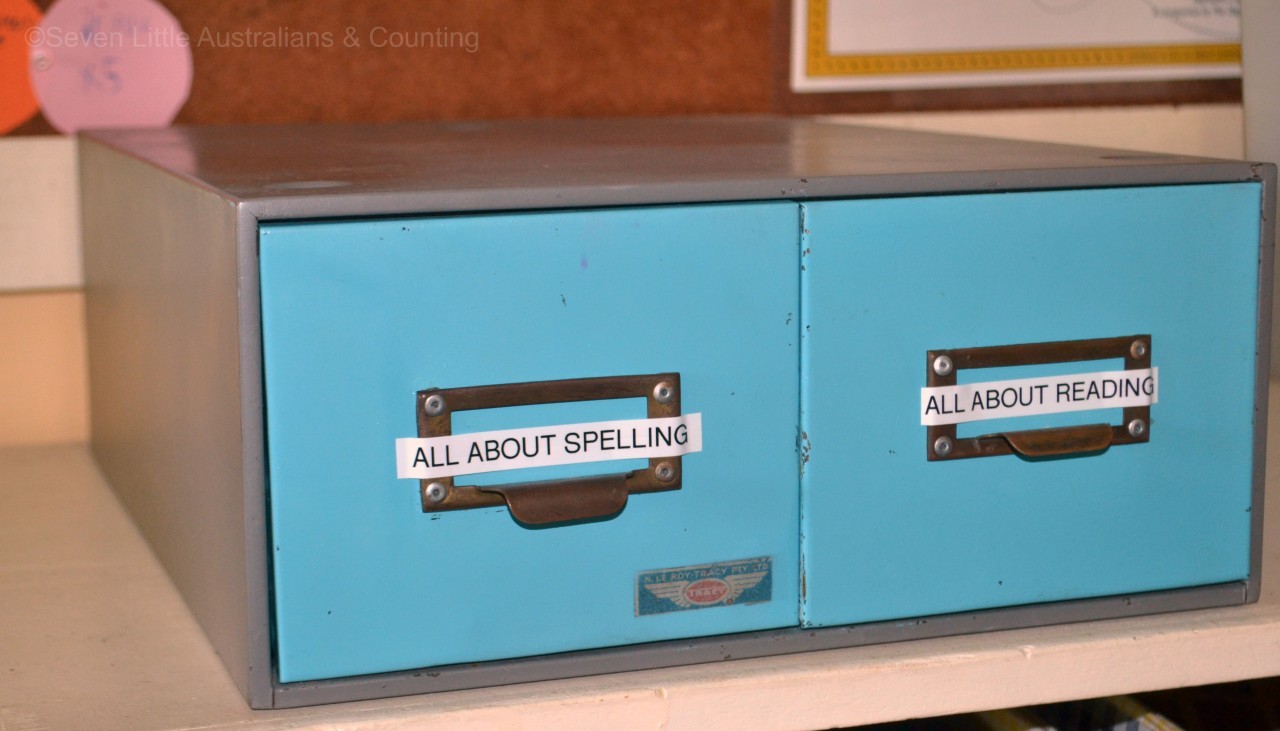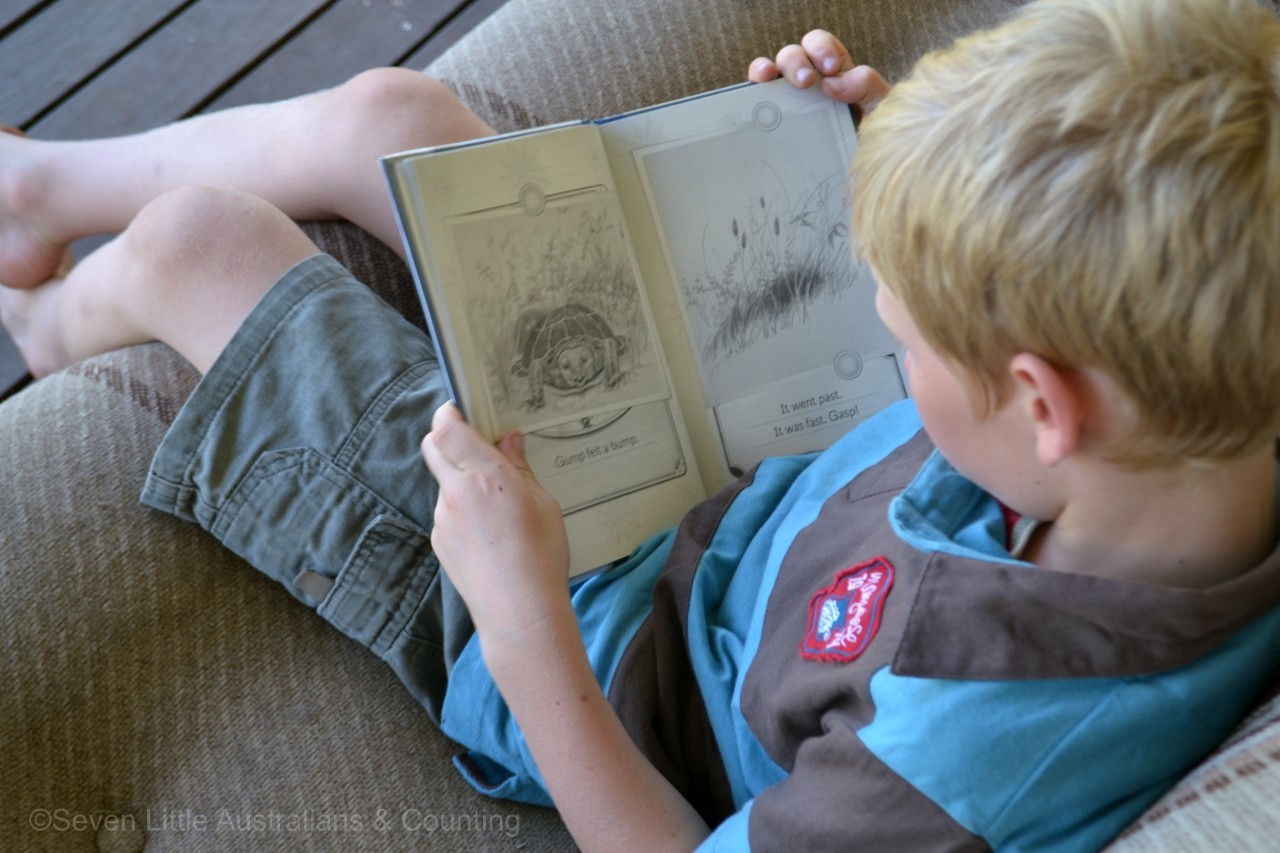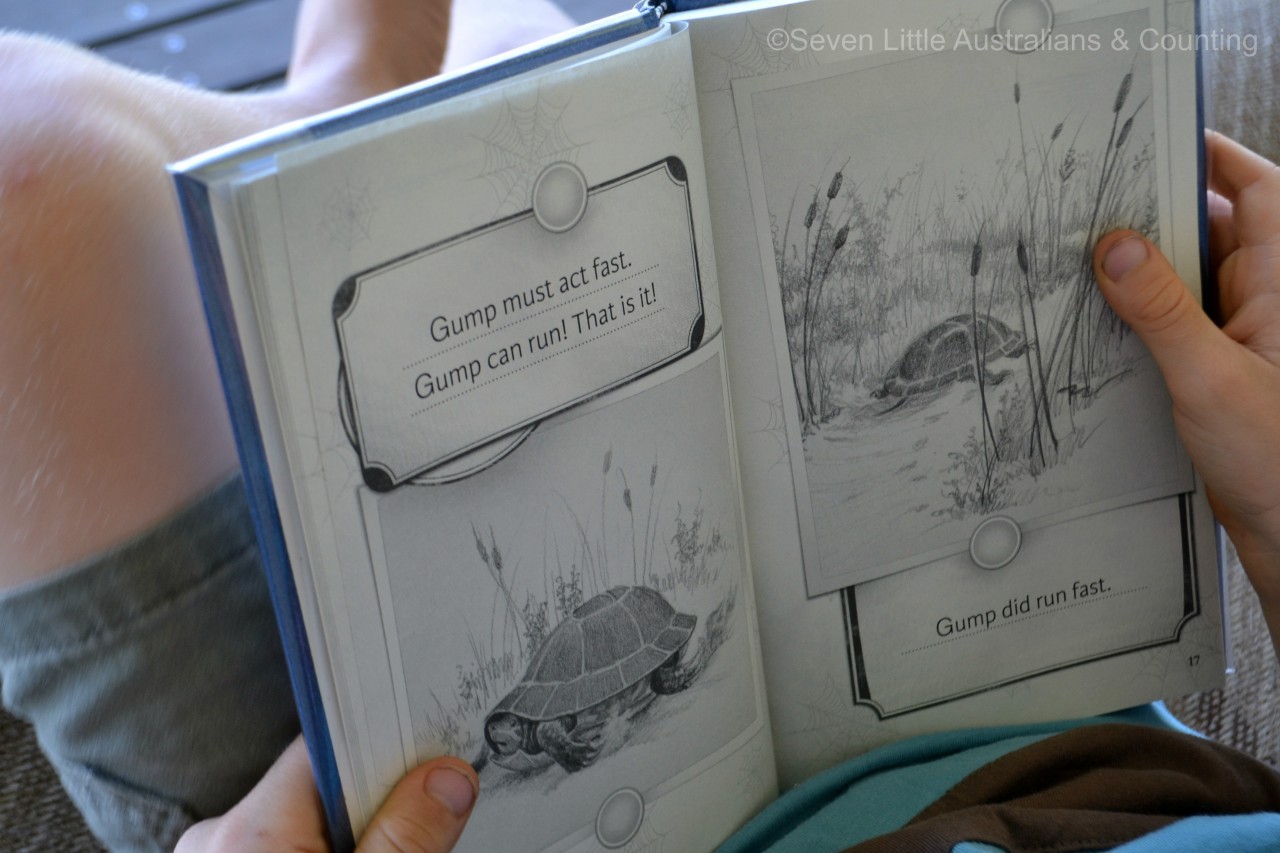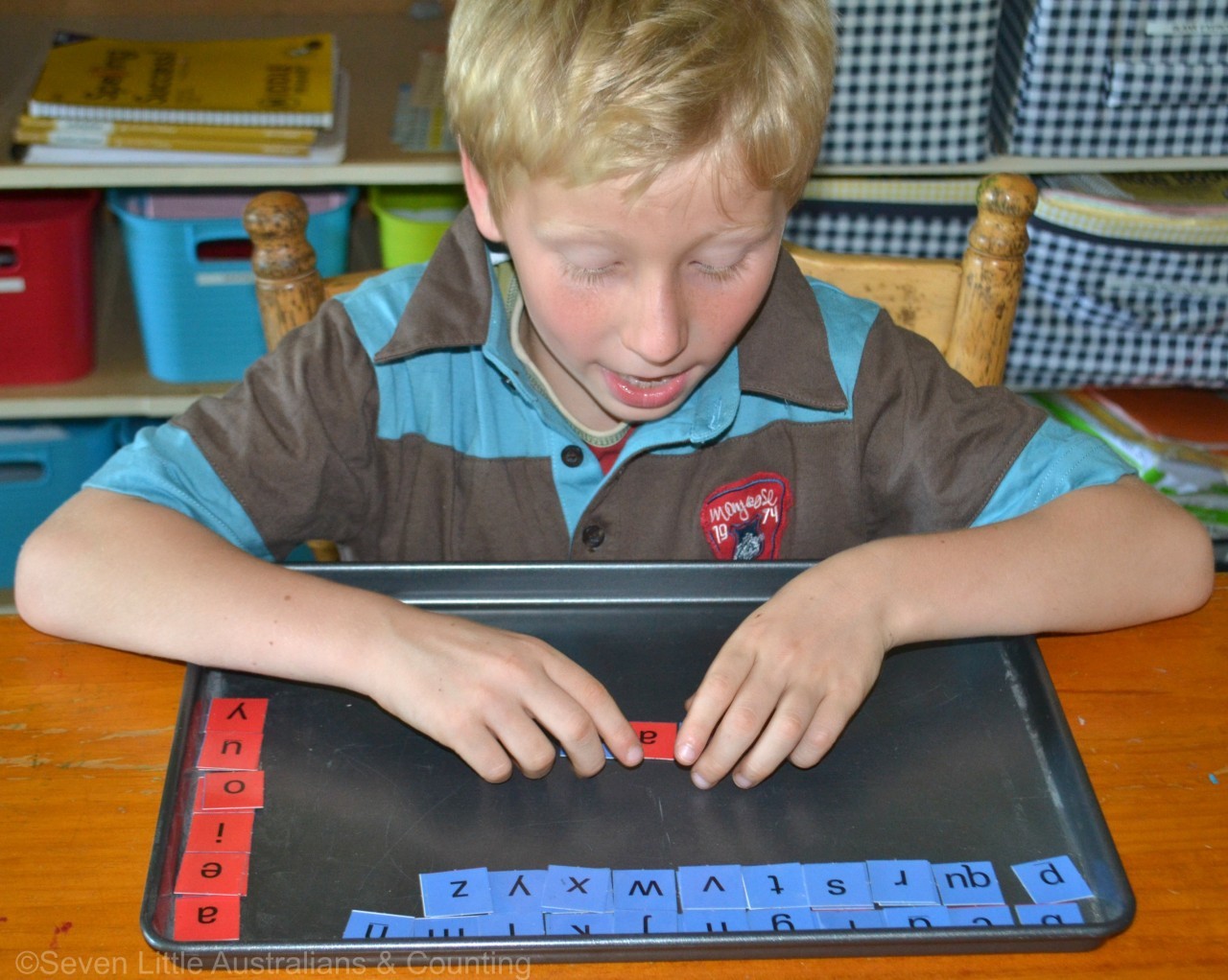After years of teaching our seven older children to read without a scripted reading program we are now using one. I’m so excited with the brilliance of All About Reading I want to share with you our experiences as we move further through the program and complete each level. I’ve previously reviewed All About Reading: Pre-Reading, chatting today about our experience with All About Reading Level 1.
In my All About Reading: Pre-Reading review I talked about our first experience using a scripted program, about our previous method, a modified Australianised version of Spalding and of my reluctance to switch to any program as it may mean changing our phonogram sounds. A reluctance that was removed when I discovered All About Reading/Spelling and Spalding both have their roots upon the Orton-Gillingham method. I also discussed how whilst our approach produced readers, the children were still missing key ‘puzzle pieces’ which resulted in their reading journey being more of a struggle than needed and taking longer to master than it should. When we began using the All About Reading program we were thrilled to have finally found ‘the missing key’ to unlocking language.
Jem (now 7) completed All About Reading Pre-Reading at the end of last year and so we were ready to begin All About Reading Level 1 at the beginning of this year.
All About Reading
All About Reading is a multi-sensory program that emphasises; phonics decoding, fluency and comprehension and as we moved through Level 1 the cleverness of this method was demonstrated clearly and repeatedly each lesson.
Which Package Did I Purchase?
The Basic Reading Interactive Kit, would be my choice, though as I already had the letter tiles and sound app from All About Spelling I didn’t need to order another as the kits are the same. Included in the basic kit are: letter tiles and magnets, a sound app disc and divider cards. The deluxe package also includes a tote bag, smiley stickers and a review box.
As I didn’t purchase the basic reading kit I was missing divider cards for Reading, they were easy to make. I also needed an alternative to the review boxes, I had been storing our spelling cards in an index card file, but with the additional reading cards it was no longer large enough. I was pleased to be able to purchase a small set of file drawers from my friend’s store.

What Other Materials Are Included?
The Level 1 materials includes: a teacher’s manual, 3 readers and the student packet. The student packet includes; an activity book, permissible to photocopy for home use, this includes; fluency practice sheets, activity sheets, progress chart & completion certificate. Also in the student packet are 32 phonogram cards and 174 word cards.
Any Other Materials Needed?
You will need a magnetic white board, which we do, however most of the time we prefer to use a biscuit (cookie) tray.
What Preparation Do I Need To Do?
Everything needed is included in the package and ‘ready to go’. However considering I need the material to ‘do the distance’ for our three youngest, I felt it an investment to laminate the phonogram and word cards myself with our home laminator.
The lessons are scripted and extremely clear to follow, though I recommend photocopying beforehand and having a quick peruse of the lesson prior to. Truthfully I didn’t always do this and often taught ‘on the fly’, either way works.
What Is The AAS: Level 1 Approach?
Each lesson involves four steps.
- A review of previously taught sounds and concepts.
- Teaching new concepts.
- Reading poetry and books for 20 minutes daily.
- Track progress with Progress Chart.
The Steps In Further Detail
1. A quick revision of the previous lesson concepts and revision of the phonogram and word cards learnt thus far. As the child masters a word card it is stored behind a divider, to be reviewed regularly.
2. This step involves many parts; work with letter tiles, the activity sheets, fluency exercises and reading from the decode-able readers. Some lessons this step can be done in one day, sometimes it may take a few days.
- Letter tile work includes exercises such as making the word, map, then changing the beginning, the ending, later on building onto the word.
- Activity sheets reinforce concepts taught and play with words in an enjoyable way.
- Fluency exercises are sheets of words learnt, these lessons occur periodically. Due to the amount of words it is best to break this into more than one lesson.
- The readers are phonetical and tie in with the lessons. As the child has been taught how to decode words and the words in the lesson are the ones in the story, he is able to read with reasonable ease.
3. Daily reading literature and poetry of your choice, language immersion.
4. Stickers placed on a chart as lesson is completed, tracking progress.

Why Is The Program So Effective?
Hands on Materials
- letter tiles – vowel and consonant have different colours, red and blue
- letter tiles enable the child to build words, ‘play’ with sounds, change endings and beginnings. A huge strength of the program
Decoding Skills
- the counting of syllables – syllabication
- breaking words into individual sounds – segmenting. This was a game changer!!
- blend work – simple blends through to final blends
- single phonograms and double letter phonograms
- teaching about open and closed syllables
Concepts
- many tips and techniques for developing fluency
- learning some spelling rules along with reading skills
- explanation of rules, how letters impact upon one another
Word Play
- activity sheets and games – lots of sound play and word matching
Revision
- fluency sheets – switch from sounding out each letter to instant word recognition. Another gamer changer!
- continual revision of word cards – extremely effective giving a sense of achievement with the growing pile of words known
Readers
- phonetical, applying words and rules learning in the lessons
- with skills taught the child is able to decode, reading with reasonable ease, adding to confidence
- stories that ‘make sense’
- books are quite challenging surprisingly so
How Long Do The Lessons Take?
Some can be completed in twenty minutes. Some lessons are long and best broken up over two day. An older child could do two twenty minute lessons daily.
How Long Does It Take To Complete A Level?
This will vary from child to child. An older child who is ‘filling in the gaps’ may move rather quickly, whereas a struggling child may need a few days or more for each lesson.
Our goal was to do a reading session daily and most lessons Jem was able to complete in one sitting, sometimes a lesson took two days. Jem doesn’t have any learning challenges so we were able to move quickly and completed Level 1 within three terms, that is thirty weeks.

Is All About Reading A Good Fit For An Older Child?
The challenge of assisting older children to read is a journey I’ve personally walked with some of our children and as a support person to close friends, so this query is near to my heart.
Having supported, coaxed, cajoled and observed later readers I’m certain that they are missing ‘pieces of the puzzle’ hence why it takes them so long to become readers. All About Reading certainly has those missing pieces however AAR will not ‘solve your problems’ if your later reader is not willing to try, true though for any progress with a later reader. If your older child will co-operate enough for a couple of lessons I believe their interest will be engaged sufficiently for them to realise (perhaps secretly) that they are finally adding to their reading skill set and be more willing.
Depending on how old your later reader is, you may have to tweak parts of the program. Some older children may not be keen on using the letter tiles, they may prefer to use whiteboard markers. Some may prefer to skip some of the activity sheets as ‘too young’, but many are age-appropriate. Of the most importance is the new-concept lessons in the Teacher’s Manual, including flashcard review, “Change the Word,” Activity Sheets and Fluency Practice.
The phonetical readers in Level 1 are great at reinforcing words just learnt and terrific at building confidence, however some older children declare them ‘too babyish’ although they aren’t. This however is the continual challenge with later readers, finding books that are simple yet engaging, not an easy task. Most however are excited to have the skills to actually be able to read, the sense of satisfaction, so don’t care about the content. However with a more ‘difficult’ child/teen you may chose to just use the fluency pages until you get to the Level 2 readers.
What About Australian/American Differences?
Australians need to add a few extra sounds to a couple of the vowels to accommodate for our pronunciation. Occasionally a word won’t ‘fit’ in the lesson it is introduced due to our different pronunciation, you may be able to simply move the word/card to a different lesson or just explain to your child that “that’s an American pronunciation” and move on.
What Are The Australian Sound Additions?
a – short a as in at
long a as in navy
“ah” as in want
“aw” as in water
short o as in swan
Isn’t It Expensive?
Unfortunately yes. This is the biggest drawback to the All About Learning products. Sadly for Australians the cost is wildly expensive, due to shipping costs and the current poor exchange rate the cost for us is 1.5 to 2 times the cost! American friends may you never bemoan the cost again;-)
It is a huge investment, however, as the program is so effective I do believe it’s worth it. If you have multiple children ‘divide’ the cost between them and if you have one, your copy will easily resell.
Where Can I Purchase AAR?
Australians – AAR and AAS may be ordered through Adnil Press or Educational Warehouse.
Overseas readers may order directly from All About Learning.

Is This Program Effective?
Yes!! All About Reading’s systematic approach, the multisensory activities and the regular reviews of concepts and words are immensely effective. Jem now has the ability and skill set to decode unknown words. He is far more fluent and confident with reading than I was expecting at this stage of his reading journey. I’m thrilled that we have found the ‘missing pieces’ of our puzzle.
Would I Recommend This Program?
Definitely yes!! Whilst I have successfully taught our other children to read without a scripted program, the ease in which Jem is tackling unknown words, his knowledge of the rules that apply, his fluency and confidence have added anew to my confidence in AAR. Jem has now completed AAR Pre-reading and Level 1 and begins AAR Level 2 with an impressive skill set.
~~~~~~~~~~~~~~~~~~~~~~~~~~~~~~~~~~~~~~~~~~~~~~~~~~~~~~~~~~~~~~~~~~~~~~~~~~~~~~~~~~~~~~~~~~
Recommended Related Reading:
- All About Reading: Pre-Reading, our journey with All About Reading and review of the Pre-Reading program
- Our Spelling Dilemma, teaching spelling to older children with All About Spelling
- Pam’s AAR review, Find and Fix the Gaps in Your Child’s Reading. I strongly empathised with her journey
- Cassandra’s review, All About Reading Level 1. Extremely thorough
Have you written a review about All About Reading. Do you have a review to recommend?
*This post contains affiliate links with All About Learning.



